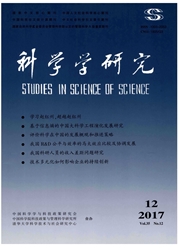

 中文摘要:
中文摘要:
依据2005年的有关统计资料,对中国大陆31个省区自然资本、人力资本和经济资本进行了存量核算,并借用重力模型和二维组合矩阵方法,分析了中国大陆省际之间自然资本、人力资本和经济资本的空间错位。结果发现:(1)我国自然资本与经济资本的空间错位较为复杂,山西、内蒙古、新疆等省区自然资本极为富集,而上海、江苏、浙江等省区经济资本存量巨大,两者之间呈现明显的资源诅咒现象;但西藏和海南两个省区,在自然资本和经济资本上均处于较为弱势的地位。(2)人力资本与经济资本在等级分类表上具有某种正相关性,东部各省区人力资本和经济资本都具有较高的存量,西藏、青海等西部省区,人力资本和经济资本都处于较低的水平,是限制区域社会经济发展的主要因素;(3)自然资本和人力资本存在明显的空间错位,西部地区自然资本丰富、人力资本相对贫瘠,东部地区人力资本丰富、自然资本相对不足。本研究对认识我国社会资本的地域分布格局,并从宏观上指导生产的合理布局具有一定的参考意义矿
 英文摘要:
英文摘要:
According to the statistic data in 2005, made a quantity accounting in natural capital, human capital and economy capital of 31 provinces, the gravity model and two-dimensional matrix analysis model were used to analyze the spatial dislocation of natural capital, human capital and economy capital in China. The results showed that : (1) The spatial dislocation of natural capital and economy capital is complex, natural capital is rich in ShanXi, Inner Mongolia, XinJiang etc. provinces, on the contrary the level of economic development is much high in ShangHai, JiangSu, ZheJiang etc. provinces, the phenomenon of resource " curse" present obvious; Tibet and HaiNan are in a more disadvantageous position of natural capital and economy capital; (2) Human capital and economy capital have certain positive correlation in classified table, the eastern provinces have upper quantity of human capital and economy capital, opposite lower in Tibet, QingHai etc. western provinces, they are the major factors in restricting socio-economic development; (3) There is an obvious spatial dislocation in natural capital and human capital, natural capital is enrich in west, but human capital is barren, east areas have barren natural capital but abundant human capital. The study has reference significance in understanding the geographical distribution of social capital and macroscopically guiding the rational distribution of production.
 同期刊论文项目
同期刊论文项目
 同项目期刊论文
同项目期刊论文
 期刊信息
期刊信息
